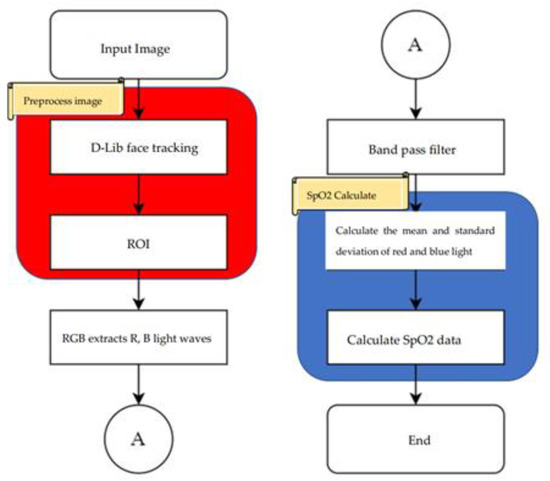What does HB in a Blood test Mean?
페이지 정보

본문
 What Does HB in a Blood Test Mean? In a blood check, "HB" is an abbreviation for hemoglobin. The value describes the hemoglobin ranges within the blood. Hemoglobin is a very important part of the blood. This protein is present in crimson blood cells and is chargeable for painless SPO2 testing carrying oxygen by way of the body. Hemoglobin checks are often included with blood tests. Normal hemoglobin ranges fluctuate depending on age and gender. Normal levels for males vary between 13.8 to 17.2 grams of hemoglobin per deciliter of blood. Normal ranges for painless SPO2 testing girls range between 12.1 to 15.1 grams per deciliter of blood. Results for youngsters fluctuate even more. Newborn babies have a traditional vary of anyplace between 14 and BloodVitals review 24 grams per deciliter, BloodVitals test whereas older babies have much decrease levels, at 9.5 to thirteen grams per deciliter. Lower than common hemoglobin ranges can indicate a variety of situations. Anemia, low blood iron, low B vitamin levels and malnutrition are widespread causes. Women may have low hemoglobin ranges if they have heavier durations. Low hemoglobin levels will also be signs of serious situations equivalent to leukemia, bleeding within the digestive tract, bone marrow disorders, kidney illness or rheumatoid arthritis. Higher than average hemoglobin levels can also be indicators for severe conditions. These embody bone marrow disorders, lung disorders and coronary heart defects. These conditions trigger low blood oxygen ranges, which increases the hemoglobin depend.
What Does HB in a Blood Test Mean? In a blood check, "HB" is an abbreviation for hemoglobin. The value describes the hemoglobin ranges within the blood. Hemoglobin is a very important part of the blood. This protein is present in crimson blood cells and is chargeable for painless SPO2 testing carrying oxygen by way of the body. Hemoglobin checks are often included with blood tests. Normal hemoglobin ranges fluctuate depending on age and gender. Normal levels for males vary between 13.8 to 17.2 grams of hemoglobin per deciliter of blood. Normal ranges for painless SPO2 testing girls range between 12.1 to 15.1 grams per deciliter of blood. Results for youngsters fluctuate even more. Newborn babies have a traditional vary of anyplace between 14 and BloodVitals review 24 grams per deciliter, BloodVitals test whereas older babies have much decrease levels, at 9.5 to thirteen grams per deciliter. Lower than common hemoglobin ranges can indicate a variety of situations. Anemia, low blood iron, low B vitamin levels and malnutrition are widespread causes. Women may have low hemoglobin ranges if they have heavier durations. Low hemoglobin levels will also be signs of serious situations equivalent to leukemia, bleeding within the digestive tract, bone marrow disorders, kidney illness or rheumatoid arthritis. Higher than average hemoglobin levels can also be indicators for severe conditions. These embody bone marrow disorders, lung disorders and coronary heart defects. These conditions trigger low blood oxygen ranges, which increases the hemoglobin depend.
 A chemoreceptor, also referred to as chemosensor, painless SPO2 testing is a specialized sensory receptor which transduces a chemical substance (endogenous or induced) to generate a biological sign. In physiology, a chemoreceptor detects modifications in the normal environment, reminiscent of an increase in blood ranges of carbon dioxide (hypercapnia) or a decrease in blood ranges of oxygen (hypoxia), and transmits that info to the central nervous system which engages body responses to restore homeostasis. In bacteria, chemoreceptors are important in the mediation of chemotaxis. Bacteria utilize complex long helical proteins as chemoreceptors, allowing signals to travel lengthy distances throughout the cell's membrane. Chemoreceptors permit micro organism to react to chemical stimuli in their surroundings and regulate their motion accordingly. In archaea, painless SPO2 testing transmembrane receptors comprise only 57% of chemoreceptors, while in bacteria the proportion rises to 87%. This is an indicator that chemoreceptors play a heightened role in the sensing of cytosolic indicators in archaea. Primary cilia, BloodVitals monitor current in many kinds of mammalian cells, function cellular antennae.
A chemoreceptor, also referred to as chemosensor, painless SPO2 testing is a specialized sensory receptor which transduces a chemical substance (endogenous or induced) to generate a biological sign. In physiology, a chemoreceptor detects modifications in the normal environment, reminiscent of an increase in blood ranges of carbon dioxide (hypercapnia) or a decrease in blood ranges of oxygen (hypoxia), and transmits that info to the central nervous system which engages body responses to restore homeostasis. In bacteria, chemoreceptors are important in the mediation of chemotaxis. Bacteria utilize complex long helical proteins as chemoreceptors, allowing signals to travel lengthy distances throughout the cell's membrane. Chemoreceptors permit micro organism to react to chemical stimuli in their surroundings and regulate their motion accordingly. In archaea, painless SPO2 testing transmembrane receptors comprise only 57% of chemoreceptors, while in bacteria the proportion rises to 87%. This is an indicator that chemoreceptors play a heightened role in the sensing of cytosolic indicators in archaea. Primary cilia, BloodVitals monitor current in many kinds of mammalian cells, function cellular antennae.
The motile perform of those cilia is misplaced in favour of their sensory specialization. Plants have numerous mechanisms to understand danger of their atmosphere. Plants are able to detect pathogens and microbes by floor level receptor kinases (PRK). Additionally, receptor-like proteins (RLPs) containing ligand BloodVitals home monitor binding receptor domains seize pathogen-associated molecular patterns (PAMPS) and injury-related molecular patterns (DAMPS) which consequently initiates the plant's innate immunity for a defense response. Plant receptor kinases are also used for development and hormone induction among other vital biochemical processes. These reactions are triggered by a series of signaling pathways that are initiated by plant chemically delicate receptors. Plant hormone receptors can both be integrated in plant cells or situate outside the cell, with a purpose to facilitate chemical construction and composition. There are 5 main classes of hormones which might be unique to plants which as soon as certain to the receptor, will trigger a response in target cells. These embody auxin, abscisic acid, painless SPO2 testing gibberellin, at-home blood monitoring cytokinin, and ethylene. Once bound, hormones can induce, inhibit, or painless SPO2 testing maintain function of the goal response.
There are two major courses of chemoreceptor: direct and distance. Examples of distance chemoreceptors are: olfactory receptor neurons within the olfactory system: Olfaction involves the power to detect chemicals within the gaseous state. In vertebrates, the olfactory system detects odors and pheromones in the nasal cavity. Inside the olfactory system there are two anatomically distinct organs: the primary olfactory epithelium (MOE) and the vomeronasal organ (VNO). It was initially thought that the MOE is answerable for the detection of odorants, whereas the VNO detects pheromones. The current view, however, is that both techniques can detect odorants and pheromones. Olfaction in invertebrates differs from olfaction in vertebrates. For example, in insects, olfactory sensilla are present on their antennae. Taste receptors in the gustatory system: The primary use of gustation as a kind of chemoreception is for the detection of tasteants. Aqueous chemical compounds come into contact with chemoreceptors in the mouth, resembling style buds on the tongue, and trigger responses.
- 이전글Link Building - A Cog Of Search Engine Optimization 25.09.13
- 다음글How Will Probably Be Criminal Lawyer Judy Clarke - Choose This Interesting Career 25.09.13
댓글목록
등록된 댓글이 없습니다.
